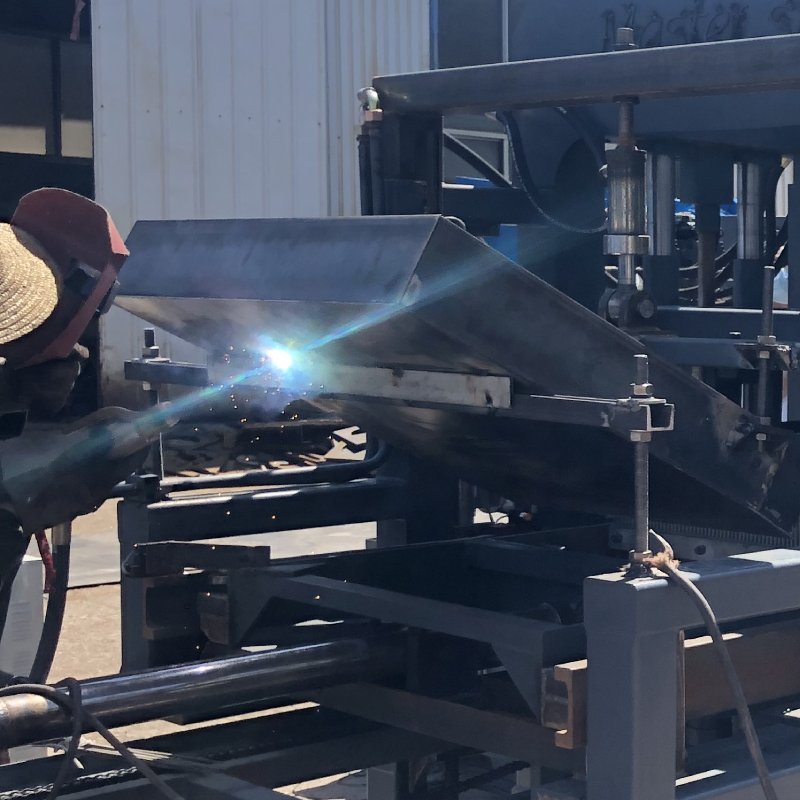
Title: Choosing the Right Location for a Block Factory: Factors and Considerations
Introduction:
Selecting the optimal location for a block factory is a crucial decision that significantly impacts the success and efficiency of your business. The choice of location can influence production costs, accessibility to raw materials, transportation logistics, and overall competitiveness in the market. In this article, we will explore the key factors and considerations to guide you in choosing the right location for your block manufacturing plant.
1. **Proximity to Raw Materials:**
The availability and proximity of raw materials, primarily cement, aggregates, and water, are fundamental considerations. Choose a location that minimizes transportation costs and ensures a steady and cost-effective supply chain. Access to quality raw materials is vital for producing high-quality concrete blocks.
2. **Accessibility and Transportation:**
Evaluate the accessibility of the chosen location in terms of transportation networks. A strategically located factory near major highways, ports, or rail lines facilitates efficient distribution and reduces transportation costs. Consider the ease of transporting both raw materials to the factory and finished products to customers.
3. **Market Demand and Customer Proximity:**
Analyze the target market and customer base for your block products. Choose a location that allows you to efficiently serve your primary markets. Proximity to construction sites and major urban centers can reduce delivery times and enhance customer satisfaction.
4. **Zoning and Regulatory Compliance:**
Ensure that the chosen location complies with local zoning regulations and environmental standards. Obtain the necessary permits for operating a manufacturing facility. Understanding and adhering to regulatory requirements is crucial to avoiding legal complications and ensuring the long-term sustainability of your business.
5. **Labor Availability and Skills:**
Assess the availability of skilled and semi-skilled labor in the chosen location. Consider the local workforce’s expertise in manufacturing and construction-related activities. A readily available and skilled labor force can positively impact production efficiency and reduce training costs.
6. **Utility Infrastructure:**
Confirm the availability and reliability of utility infrastructure, including electricity, water, and gas. These utilities are essential for the operation of machinery and the overall production process. Ensure that the infrastructure can meet the anticipated demands of your block manufacturing plant.
7. **Land Cost and Availability:**
Evaluate the cost of land in potential locations and its availability for future expansion. Consider the long-term growth prospects of your business and whether the chosen location allows for scalability. Balancing upfront costs with future expansion possibilities is critical in making a prudent decision.
8. **Community and Environmental Impact:**
Consider the impact of your factory on the local community and environment. Engage with local stakeholders and address any concerns regarding noise, emissions, and waste management. Implement eco-friendly practices to minimize the environmental footprint of your manufacturing operations.
9. **Risk Assessment:**
Conduct a risk assessment that takes into account potential natural disasters, such as floods or earthquakes, in the chosen location. Implement risk mitigation strategies and ensure that the factory is equipped to withstand possible challenges.
10. **Cost of Living and Business Environment:**
Consider the cost of living for your workforce in the chosen location. Additionally, assess the overall business environment, including tax regulations and incentives, to determine the financial feasibility of setting up a block manufacturing plant in that area.
Conclusion:
Choosing the right location for a block factory involves a comprehensive analysis of various factors, each with its own set of considerations. By carefully evaluating factors such as raw material access, transportation logistics, regulatory compliance, labor availability, and community impact, you can make an informed decision that sets the foundation for a successful and sustainable block manufacturing business. Balancing these considerations will contribute to the long-term success of your factory in the competitive landscape of the construction materials industry.
